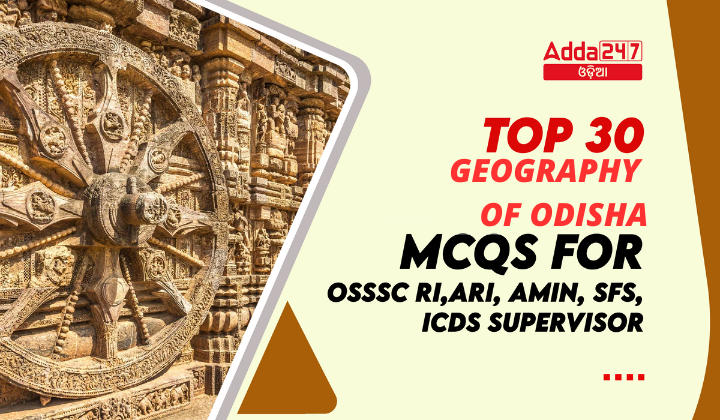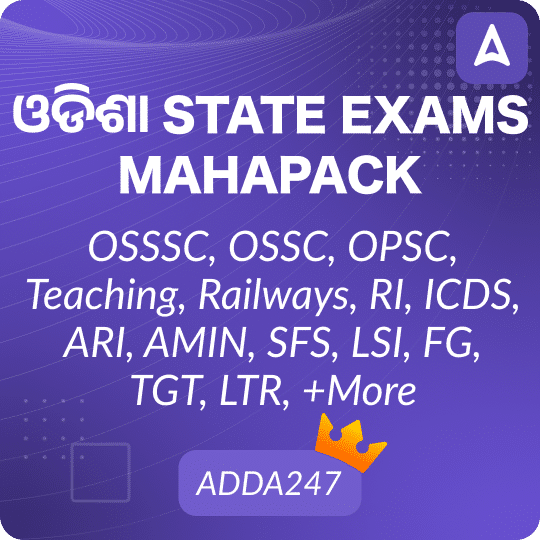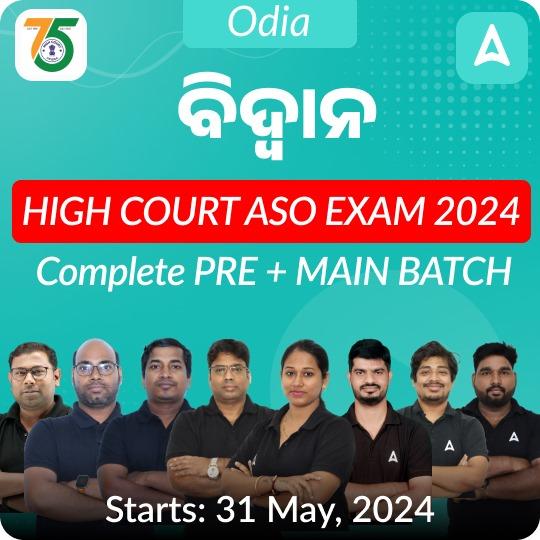For candidates preparing for the Odisha Sub-ordinate Staff Selection Commission (OSSSC) recruitment exams, mastering the geography of Odisha is essential. This set of top 30 multiple-choice questions (MCQs) covers a range of topics including the physical geography, climate, rivers, mountains, forests, and mineral resources of Odisha. These questions are designed to help you understand the unique geographical features of the state and how they influence the region’s economy and culture.
Top 30 Geography of Odisha MCQs For OSSSC RI,ARI, Amin, SFS, ICDS Supervisor
- Which of the following is the largest river in Odisha?A. Brahmani
B. Subarnarekha
C. Mahanadi
D. Vansadhara
Answer: C. Mahanadi - Chilika Lake, one of the world’s largest brackish water lagoons, is located on which coast of Odisha?A. West Coast
B. South Coast
C. East Coast
D. North Coast
Answer: C. East Coast - What percentage of the state of Odisha is covered by a green cover?A. 10%
B. 20%
C. 33%
D. 50%
Answer: C. 33% - Which craton is not found in Odisha?A. North Odisha Craton
B. Western Odisha Craton
C. Eastern Odisha Craton
D. None of the above
Answer: C. Eastern Odisha Craton - Which of the following rivers does NOT flow through Odisha?A. Baitarani
B. Vansadhara
C. Subarnarekha
D. Godavari
Answer: D. Godavari - The coasts of Odisha are predominantly made up of which type of sediments?A. Igneous rocks
B. Deltaic sediments
C. Metamorphic rocks
D. None of the above
Answer: B. Deltaic sediments - Which one of these is a lake in Odisha?A. Sambhar
B. Kanjia
C. Vembanad
D. Dal
Answer: B. Kanjia - In terms of geological age, what period do the sediments found in Odisha’s cratons belong to?A. Jurassic
B. Paleozoic
C. Quaternary
D. Cretaceous
Answer: D. Cretaceous - Which of these physiographic divisions is not a part of Odisha?A. Coastal plains
B. Central plateaus
C. Central hilly regions
D. Western desert
Answer: D. Western desert - What is the catchment area percentage of the Mahanadi river in Odisha?A. 10%
B. 20%
C. 30%
D. 42%
Answer: D. 42% - What body of water bounds the fertile coastal plains of Odisha to the east?A. Arabian Sea
B. Indian Ocean
C. Bay of Bengal
D. None of the above
Answer: C. Bay of Bengal - Which part of Odisha consists of rolling uplands?A. Eastern and southern
B. Western and northwestern
C. Northern and eastern
D. Central and southern
Answer: B. Western and northwestern - The western and northern portions of Odisha are part of which plateau?A. Malwa Plateau
B. Deccan Plateau
C. Chota Nagpur Plateau
D. Vindhya Plateau
Answer: C. Chota Nagpur Plateau - What percentage of Odisha is covered by forests?A. 25%
B. 30%
C. 31.41%
D. 35%
Answer: C. 31.41% - Which national park in Odisha is known for its population of tigers, elephants, and other wildlife?A. Nandankanan
B. Simlipal National Park
C. Bhitarkanika National Park
D. Satkosia National Park
Answer: B. Simlipal National Park - What type of wildlife is protected by the Bhitarkanika Wildlife Sanctuary?A. Tigers
B. Estuarine crocodiles
C. Elephants
D. Rhinoceroses
Answer: B. Estuarine crocodiles - Which coastal lake in Odisha is the largest in India?A. Wular Lake
B. Vembanad Lake
C. Pulicat Lake
D. Chilka Lake
Answer: D. Chilka Lake - How many migratory and resident species of birds does the Chilka Lake Bird Sanctuary harbor?A. Over 50 species
B. Over 100 species
C. Over 150 species
D. Over 200 species
Answer: C. Over 150 species - The valleys of which rivers empty into the Bay of Bengal?A. Godavari and Krishna
B. Narmada and Tapi
C. Mahanadi, Brahmani, and Baitarani
D. Ganges and Brahmaputra
Answer: C. Mahanadi, Brahmani, and Baitarani - Which of the following is not a major physiographic feature of Odisha?A. Fertile coastal plains
B. Central hilly regions
C. Desert region
D. Mountainous highlands and plateau regions
Answer: C. Desert region - Which sanctuary in Odisha has been protecting estuarine crocodiles since 1975?A. Satkosia
B. Balukhand-Konark
C. Bhitarkanika
D. Kuldiha
Answer: C. Bhitarkanika - What type of lake is Chilka Lake?A. Freshwater lake
B. Brackish water lake
C. Glacial lake
D. Volcanic crater lake
Answer: B. Brackish water lake - Which wildlife sanctuary is known for its protection of olive ridley sea turtles?A. Satkosia
B. Bhitarkanika
C. Simlipal
D. Gahirmatha
Answer: D. Gahirmatha - Which region of Odisha is known for having the largest expanse of lush green forests with waterfalls?A. Gajapati district
B. Balasore district
C. Cuttack district
D. Mayurbhanj district
Answer: D. Mayurbhanj district - Which of the following rivers does not have a major floodplain in Odisha?A. Subarnarekha
B. Brahmani
C. Mahanadi
D. Godavari
Answer: D. Godavari - What is the height of Deomali, the highest mountain peak in Odisha?A. 1400 m
B. 1550 m
C. 1672 m
D. 1800 m
Answer: C. 1672 m - In which district of Odisha is Deomali located?A. Ganjam
B. Puri
C. Koraput
D. Khordha
Answer: C. Koraput - Deomali is part of which mountain subsystem in Odisha?A. Gandhamardhan Hill
B. Chandragiri-Pottangi
C. Mahendragiri Hills
D. Nilgiri Hills
Answer: B. Chandragiri-Pottangi - Deomali is one of the tallest peaks of which mountain range?A. Himalayas
B. Aravalli
C. Eastern Ghats
D. Western Ghats
Answer: C. Eastern Ghats - Which of the following is true about Deomali?A. It is a volcanic peak.
B. It is the highest mountain peak in Odisha.
C. It is the second highest peak in India.
D. It is located in the coastal plains of Odisha.
Answer: B. It is the highest mountain peak in Odisha. - The central mountainous and highlands region of Odisha is known for its:A. Coastal plains
B. Rich mineral deposits
C. Desert terrain
D. Dense urban areas
Answer: B. Rich mineral deposits













